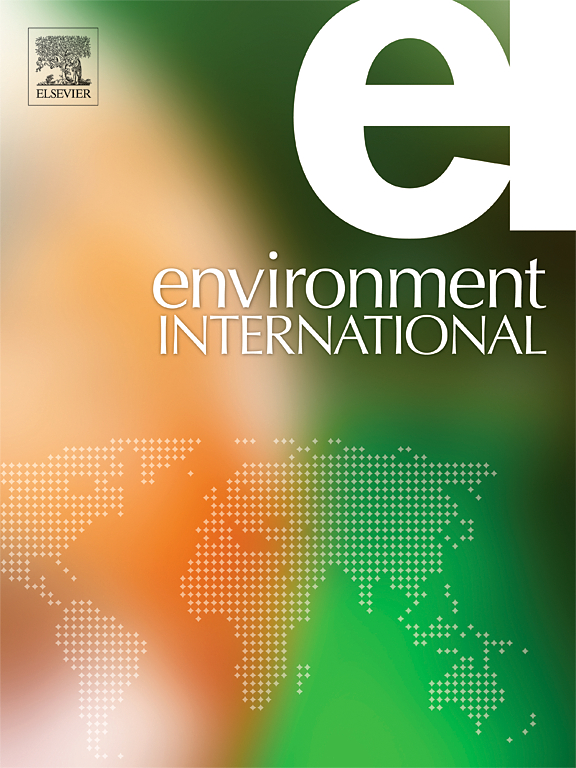Evaluating PFAS-Induced modulation of peripheral blood mononuclear cells (PBMCs) immune response to SARS-CoV-2 spike in COVID-19 Vaccinees
IF 10.3
1区 环境科学与生态学
Q1 ENVIRONMENTAL SCIENCES
引用次数: 0
Abstract
The persistent nature of the environmental contaminants per- and polyfluoroalkyl substances (PFAS) has recently received considerable attention, particularly because of their adverse effects on immune system functionality in the context of vaccine responses to infectious diseases. Following COVID-19 vaccination, some studies have shown a significant negative correlation between serum PFAS concentrations and the humoral immune response to the SARS-CoV-2 spike protein vaccination. However, the influence of PFAS on the cell-mediated immune response to SARS-CoV-2 spike protein post-COVID-19 vaccination remains underexplored. In the present study, we investigated the impact of a human blood-relevant PFAS mixture, containing perfluorooctane sulfonate (PFOS), perfluorooctanoic acid (PFOA), perfluorohexane sulfonate (PFHxS), perfluorononanoic acid (PFNA), perfluorodecanoic acid (PFDA), and perfluoroundecanoic acid (PFUnDA) on innate (monocytes and NK cells), cell-mediated (T cells) and B cells adaptive immune responses in COVID-19-vaccinated female and male healthy donors. Human peripheral blood mononuclear cells (PBMCs) were exposed to a mixture of the six PFAS at real life concentrations and subsequently stimulated with the SARS-CoV-2 spike peptide. We report a significant upregulation of IFNγ production in T and NK cells, particularly among male donors exposed to high concentrations of the PFAS mixture. Conversely, we observed a decrease in the total B-cell population, particularly among female donors. A significant reduction in the secretion of the pro-inflammatory chemokines MIP-1α (CCL3) and MIP-3α (CCL20) was observed at high PFAS mixture concentrations. Overall, these findings suggest that high PFAS exposure may differentially affect immune responses in a sex-specific manner, with a potential impact on vaccine efficacy.


求助全文
约1分钟内获得全文
求助全文
来源期刊

Environment International
环境科学-环境科学
CiteScore
21.90
自引率
3.40%
发文量
734
审稿时长
2.8 months
期刊介绍:
Environmental Health publishes manuscripts focusing on critical aspects of environmental and occupational medicine, including studies in toxicology and epidemiology, to illuminate the human health implications of exposure to environmental hazards. The journal adopts an open-access model and practices open peer review.
It caters to scientists and practitioners across all environmental science domains, directly or indirectly impacting human health and well-being. With a commitment to enhancing the prevention of environmentally-related health risks, Environmental Health serves as a public health journal for the community and scientists engaged in matters of public health significance concerning the environment.
 求助内容:
求助内容: 应助结果提醒方式:
应助结果提醒方式:


